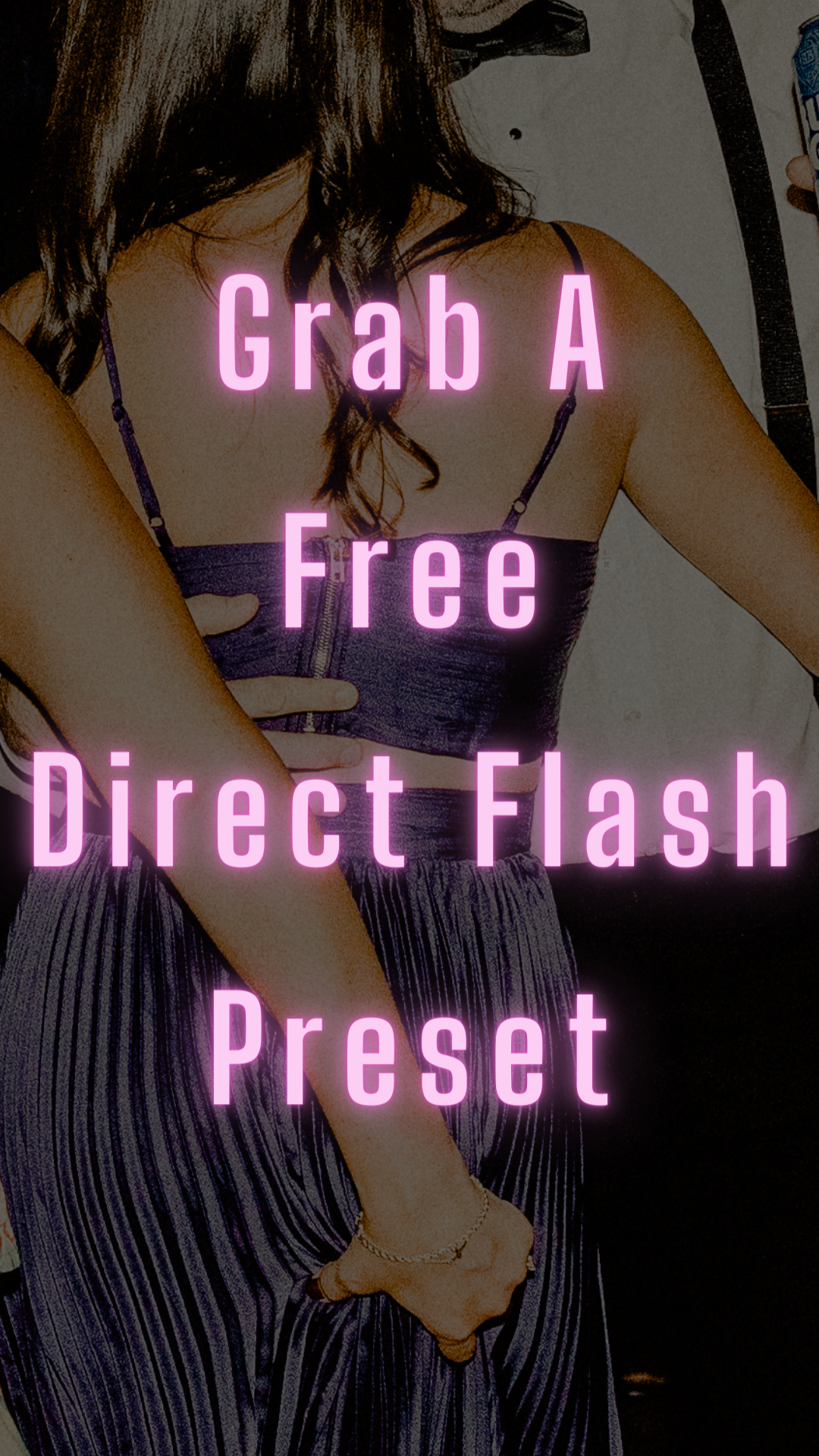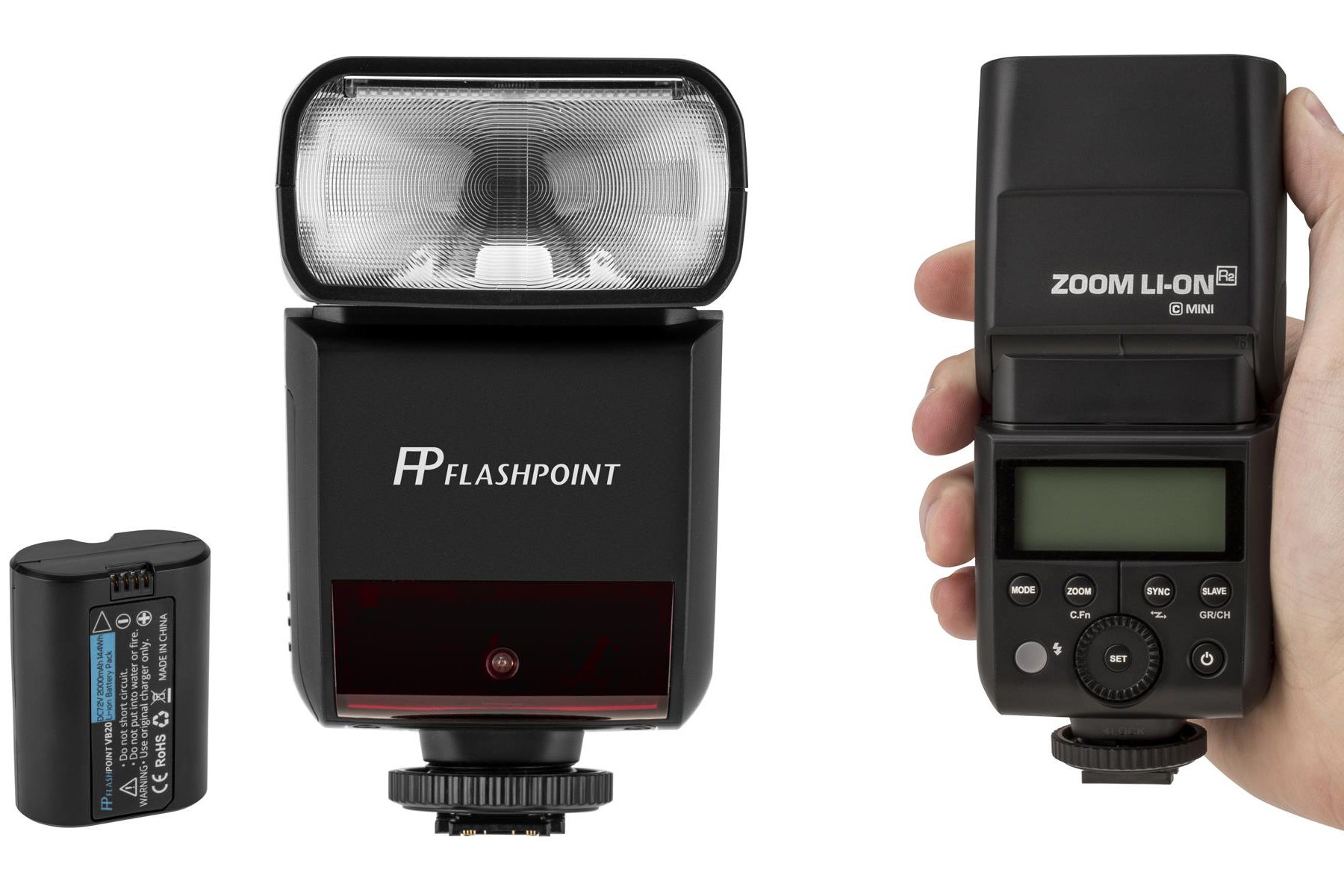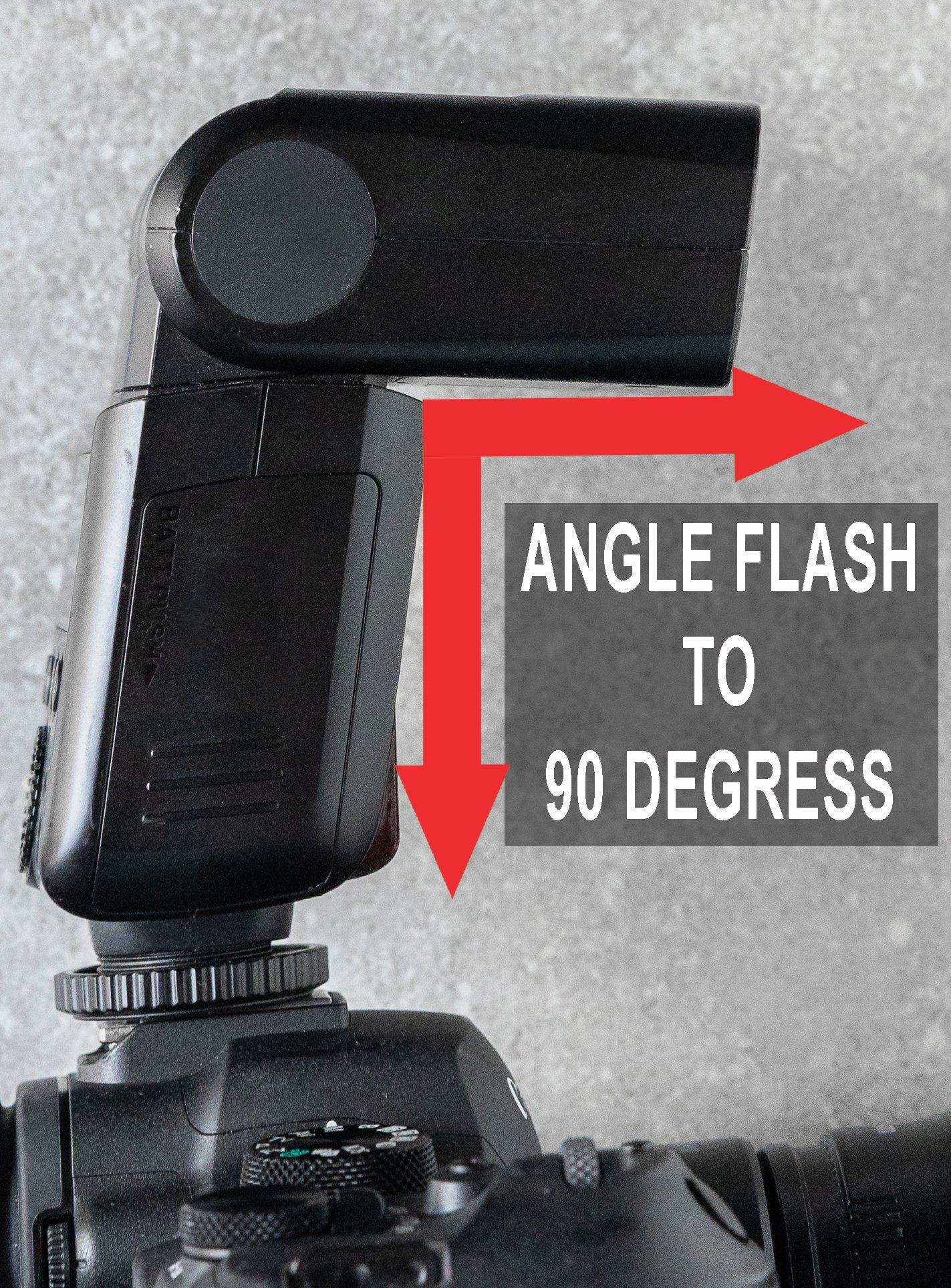Mastering Direct Flash for Bold, Editorial Wedding Photos (2025 Trend)
- The look Crisp, editorial, “paparazzi-style” with punchy subjects & dark backgrounds a 90s/Y2K fashion vibe that’s trending now
- When it shines Receptions & after-party, dance floor, blue-hour/night portraits captures energy and motion cleanly
- Skin & shine Managed with angle, power, diffusion & light retouch avoids unflattering hotspots
- Red-eye prevention Flash off the lens axis (speedlight/flash bracket) plus minor post fixes if needed
- Ceremony policy Ask your venue/faith leader about flash rules I adapt to “no-flash” spaces
- Film + direct flash Option to mix 35mm for timeless grain + digital punch best of both worlds
Today, I’m exploring the direct flash trend in wedding photography and how it can add a fresh, modern touch to your wedding photos. As a Boston wedding photographer, I strive to stay current with photography trends and techniques to provide the best possible service to my clients.
The Direct Flash Trend: A Quick Overview
Clarifying Terms and Concepts
Before diving deeper into the direct flash trend, let's clarify some essential terms:
Ambient light: This refers to the natural or existing light in a scene, such as sunlight, moonlight, or artificial light sources like lamps or overhead lighting.
Bounce flash: This technique involves pointing the flash towards a surface, like a wall or ceiling, allowing the light to bounce off and indirectly illuminate the subject. This creates a softer, more diffused effect compared to direct flash.
Understanding these terms will help you appreciate the differences between direct flash and other lighting techniques in Boston area wedding photographers use.
What is direct flash?
Direct flash refers to an on-camera flash pointed directly at the subject, resulting in a bright, evenly-lit photo. This differs from other flash techniques, such as bounce or off-camera flash, which diffuses the light to create a softer effect.
Why has direct flash become popular in wedding photography?
Direct Flash has gained popularity for its ability to capture the raw, authentic emotions of a wedding. It has a can give a quality of light that both disposals cameras and high fashion which are a current trend in photography. The technique adds a unique, modern aesthetic to your Boston wedding photos, setting them apart from traditional wedding images.
Free Direct Flash Preset
Click the image to grab your free Adobe Lightroom preset for direct flash.
What Is The Best Flash For Wedding Reception?
The best flash for direct flash for photographing a wedding reception is the Flashpoint Zoom Li-ion Mini TTL R2. It is affordable, lightweight and has a lithium battery, so I never have to change my batteries during a wedding reception. They have a built-in Radio Transceiver, making it easy for photographers to set up a multi-flash setup. I carry two of these flashes with two batteries to every wedding.
I carry minimal wedding photography equipment to a wedding day. If I have two of these in my bag they will give me enough light for just about any situation I find my self in. All in all, the Flashpoint Zoom Li-on Mini TTL R2 is my top pick for wedding receptions. It's a balance of convenience and performance that is hard to beat.
I recommend two flashes, two charges, and three batteries which will get you through those doubleheader weekends.
2x - Flashpoint Zoom Li-ion Mini TTL R2
2x - Flashpoint Battery Charger for the Zoom Li-on Mini Flash Battery (C20)
3x - Flashpoint Lithium-Ion Battery for Zoom Lion Mini Flash (7.2V, 2000mAh) VB20
How To Use Direct Flash At Wedding Receptions
To achieve the best results with direct flash, it's essential to balance the flash intensity with ambient light. Here are a few ways how wedding photographers in Boston are using direct flash for reception wedding photos:
Camera Settings For Direct Flash:
For direct flash, you'll want to experiment with various shutter speeds, apertures, and ISO settings. Generally, a faster shutter speed (1/125 or higher) and a smaller aperture (f/2.8 to f/9) help balance the flash with ambient light. Keep the ISO setting as low as possible (100-400) to minimize noise.
During a wedding reception I know that if my flash power is set to 1/128 and I set my camera to the settings below with the subject is 4-5 feet away my photo will be exposed properly.
Shutter Speed: 1/200
F-Stop: 2.8
ISO Speed: 400
Direct Flash Settings:
When I’m photographing a wedding reception with a direct flash I mount my Flashpoint flash on my camera with a 90 degree angle. I select the manual mode and set the flash power to the lowest power setting with the zoom set to 70mm. Then set my camera settings to 1/200, f/2.8 and ISO 320.
In summary my direct flash settings are:
Flash Mode: Manual
Power Setting: 1/128
Zoom: 70mm
Position of Direct Flash:
Experiment with the angle of the flash relative to your subject. Shooting at an angle can create interesting shadows and highlights, adding depth and dimension to your images.
Understanding and applying these techniques can elevate your direct flash wedding photography skills and create stunning, modern images.
Angle of Direct Flash: 90 Degrees
Flash modifiers:
You can use diffusers, grids, or snoots to control the direction and spread of light from your flash. This can help create a more polished look in direct flash wedding photos.
I personal don’t use any modifiers on my direct flash because I want to carry the least amount of camera equipment and like the look of a direct flash zoomed in to 70mm.
Benfits to Using Direct Flash
Freeze the action:
Direct flash is perfect for freezing motion on the dance floor, as it provides a burst of light that highlights your subjects and captures their expressions and movements in sharp detail. This allows you to document the dynamic, fast-paced atmosphere of the dance floor in your wedding photos.
Create contrast:
One of the key advantages of direct flash is that it creates strong contrast, which can make your subjects pop against the background. This high-contrast look can add drama and depth to your dance floor photos, making them stand out in your wedding album.
Capture vibrant colors:
Direct flash can help to enhance the vibrant colors of the dance floor, whether it's the colorful outfits of your guests or the bold hues of the lighting and decor. The strong burst of light from your flash can bring out these colors and create visually striking images.
When To Use Direct Flash at A Wedding
Knowing when to use direct flash
Assessing the venue and lighting conditions is essential to determine when direct flash is best for your wedding photos. I have photographed at various Boston wedding venues, and each location presents unique opportunities for using direct flash effectively. At the same time some venues look better when using natural light that a lighting designer has installed. Experiment with both natural light and direct flash during a wedding reception and see what looks best.
Direct Flash on the Dance Floor for a Consistent Style
While direct flash can create dynamic and captivating wedding photos, it's essential to maintain a consistent style throughout your wedding album. That's why I primarily use direct flash on the dance floor, where it perfectly captures the lively atmosphere and candid moments.
By concentrating direct flash usage in this specific setting, I can create a cohesive and polished look in your wedding photos, beautifully preserving every aspect of your special day. Examples of this can be found in my Boston Public Library wedding and Lenox Hotel wedding galleries.
Focusing on direct flash for the dance floor ensures that your wedding reception photos remain consistent in style and quality.
Direct Flash Wedding Photography — FAQs
What is “direct flash” and why is it popular at weddings?
Direct flash means aiming the flash straight at the subject for a crisp, editorial look with strong separation from the background. It’s back in style thanks to the paparazzi-inspired, fashion vibe couples love for night portraits and dance-floor energy. :contentReference[oaicite:2]{index=2}
When is direct flash most effective on a wedding day?
It shines after dark—receptions, after-parties, and blue-hour/night portraits—freezing motion with a bold, stylish feel while keeping skin tones punchy. :contentReference[oaicite:3]{index=3}
Will direct flash be allowed during our ceremony?
Many houses of worship and some venues restrict flash during the ceremony. I confirm policies in advance and switch techniques (silent shutters, fast lenses) when flash is not permitted. :contentReference[oaicite:4]{index=4}
Does direct flash cause harsh shadows or shiny skin?
It can if used carelessly. I control angle, distance, and power; use diffusion/modifiers; and balance ambient light so the look stays flattering and intentional rather than harsh. :contentReference[oaicite:5]{index=5}
How do you prevent red-eye with direct flash?
I keep the flash off the lens axis (e.g., a speedlight higher than the lens or on a bracket) and adjust angles—simple physics that dramatically reduces red-eye. Minor retouch can handle the rare outlier. :contentReference[oaicite:6]{index=6}
Is direct flash only for reception “party” photos?
It’s amazing for the party, but I also use it for chic, fashion-forward couple portraits at night or in moody spaces. We’ll mix it with softer light (bounce/off-camera) for balance across the gallery. :contentReference[oaicite:7]{index=7}
Can we combine film with direct flash for a timeless look?
Yes—35mm film with direct flash gives nostalgic grain + modern pop. Many couples request this hybrid for editorial-meets-timeless vibes. :contentReference[oaicite:8]{index=8}
Will direct flash make our photos look “trendy” later?
Trends come and go, but used intentionally, direct flash reads as classic editorial. We’ll pair it with natural light and off-camera setups so your gallery feels current and enduring. :contentReference[oaicite:9]{index=9}
What gear/settings help direct flash look flattering indoors?
A hot-shoe speedlight or on-camera flash (angled slightly off axis), moderate power, fast lenses, and exposure balanced to ambient keep the subject clean without nuking the room. :contentReference[oaicite:10]{index=10}
Can we request mostly direct-flash photos—or just a few?
Totally. Tell me your preference and I’ll dial the ratio—some couples want a handful for the party vibe; others love a full editorial set after dark. We’ll design a plan that fits your timeline. :contentReference[oaicite:11]{index=11}
Conclusion: Embrace the Direct Flash Trend
In conclusion, embracing the direct flash trend in Boston wedding photography can create timeless images from the day. I use these flash techniques to create a captivating collection of wedding photos by experimenting with camera settings, flash modifiers, and positioning.














From direct flash to blurry motion, this post covers some current trends in wedding photography—and how a Boston wedding photographer can help you decide what fits your vibe.